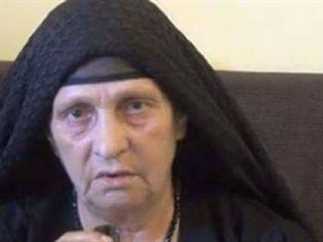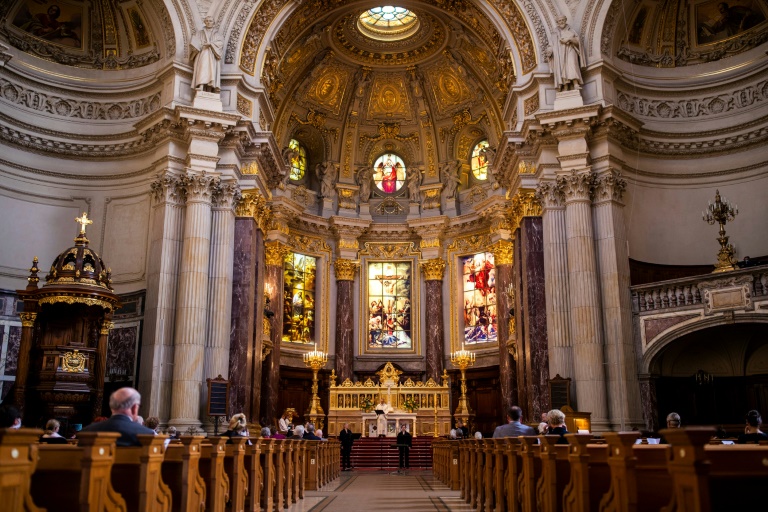“The Copts are the origin of this country…we treat the guests who came and lived here nicely…but we are ready to die as martyrs if anyone touches our Christian message.”
“The Coptic Church is not [merely] a parallel republic in Egypt…it is an empire.”
These two statements do not come from Jihadist or radical Coptic websites. Coptic Orthodox Archbishop Bishoy, the Secretary of the Church Council and a possible successor to Pope Shenouda, made the first on September 15, 2010. The second is a response from Dr. Muhammad Selim al-Awa, a moderate Islamist intellectual and lawyer, speaking on al-Jazeera later the same day. The exchange shows the level of socio-religious polarization that plagued Egypt months before the January 1 bombing of the Church of the Two Saints in Alexandria (killing 23 and injuring dozens) and the January 11 shooting (killing one and injuring 5) aboard a train in Upper Egypt.
The sad story of unraveling social cohesion in Egypt goes back decades. Despite official lip service to “national unity,” rulers of Egypt since 1952 have had an uneasy relationship with religious minorities. The Arab-Israeli conflict had disastrous repercussions for the Egyptian Jewish community: an indiscriminate crackdown by President Gamal Abdel Nasser’s regime following the 1954 Lavon Affair (a covert Israeli operation involving Egyptian Jews) and the 1956 Suez Crisis, leading ultimately to the migration of nearly all Jews from Egypt. Then came the issue of the Baha’is, a tiny minority that was recognized as a distinct religion in 1924 during Egypt’s liberal era, before Nasser’s regime rescinded their legality in 1960. Baha’is have been struggling for legal acceptance ever since. And let us not forget the Shi’a, termed the “agents of Iran” in an infamous 2006 statement by President Mubarak.
The Coptic Orthodox Christians are by far the largest religious minority, and their relations with post-1952 Egyptian regimes have waxed and waned. Less explored but also relevant and complex is their relation with Egypt’s strongest opposition, the various currents of the Islamist trend.
The official stance of the Muslim Brotherhood is that the Copts are citizens with equal rights. Brotherhood leaders are eager to tell any interviewer that the only male attendee of Brotherhood founder Hassan al-Banna’s funeral aside from his father was Makram Ebeid, a leading Christian politician, and that the only Christian MP in the 1987 Parliament was elected on the “Islamic Alliance” ballot. There is a heated debate, however, within the Brotherhood on the Coptic question, which came out clearly in the internal struggle over the group’s 2007 political program; among the most controversial points was the Brotherhood’s position that a Copt was not eligible to become president.
The Copts’ perception of the Brotherhood likewise is not positive. In a series of interviews conducted in 2009 for a study on Coptic activism abroad, four ideological trends emerged: liberals, pragmatists, conservatives, and radicals. The liberals, the most tolerant of the four, view the Brotherhood with suspicion. The other three trends range from believing in a Brotherhood political conspiracy against Copts to believing in direct Brotherhood involvement in massacring Copts. Copts living inside Egypt tend to reflect a wider spectrum of views but worry about the Brotherhood is pervasive; when asked about the Church’s stance on the Brotherhood, Archbishop Bishoy said on September 15, 2010 “we love them because Jesus asked us to…but I would be happy if the Brotherhood started believing in human rights.”
Negative perceptions and mutual distrust also extend to Coptic relations with the second largest Islamist trend in Egypt. Salafis are much less politically active than the Muslim Brothers; they rally around certain imams and mosques and rarely involve themselves in demonstrations. But hundreds of Salafis and other apolitical Muslims took to the streets of Alexandria in October 2010 to demand the release of several female converts to Islam that the Coptic Church was reportedly holding against their will. The relationship between the Salafis and the Copts was not always so hostile, despite Salafism’s negative perception of any “other.” In the late 1980s, for example, Salafi Sheikhs helped to de-escalate rising tensions between Coptic residents of the impoverished Shubra district of Cairo and the Islamic Group during its jihadist phase.
Media reports of female converts who were handed over to the Church by State Security or by their families have been around for years. Recently, the high profile cases of Wafaa Constantine, Camilia Shehata, and Mary Abdullah Zaki—all three are wives of priests who allegedly converted to Islam, and were reportedly handed to the Church by State Security to be “advised,” never to appear in public again—have inflamed sectarian tensions and activated Egyptian Salafis as well as attracting the attention of al-Qaeda in Iraq.
The government’s handling of these cases sheds light on a broader crisis within Egypt, where the rights of the individual enjoy the lowest priority – well below the rights of the ruler, the government, the religious group, the clan, the family, and other collectivities. Salafis who went to the streets to protest the situation were not necessarily acting in defense of individual freedoms but of a perceived co-religionist.
In addition to this skewed approach toward freedoms, the Mubarak government chooses to deal with sectarian tensions as a security threat to the regime separated from its social and political context, the same approach it has taken since the early 1980s. In Pope Shenouda’s words, “in times of tensions, we only see security men….and a complete absence of MPs and others.” When polarization mishandled by coercive apparatuses leads to violence, the regime quickly resorts to another level of indiscriminate repression, a formula that was used extensively in the 1990s and resulted in five years of bloodshed in Upper Egypt. The case of al-Said Bilal was a throwback to those ugly days; arrested in a sweeping crackdown by State Security on January 5, his dead body was returned to his family 24 hours later.
Egypt’s sectarian crisis is rooted in the absence of four factors: equal citizenship rights (regardless of religion); a constitutional right to freedom of belief and worship; a transparent, accountable government; and a comprehensive, transparent strategy for promoting social cohesion. Such a strategy should avoid reliance on intervention by security forces, forced disappearances, torture, and other repressive methods, which seem to be the pillars of the current socio-religious “cohesion” strategy. Copts and other Egyptians directed their post-attack anger against the regime for reasons far beyond the fact that there were weak security arrangements around the Two Saints Church at a time of high tensions. Rather it was the unwillingness of the regime to uphold any of the aforementioned rights, even if such measures were rationalized as necessary to preempt terrorism. The unresolved crisis of Egypt remains one of democracy rather than of religion.
Omar Ashour is the Director of the Middle East Graduate Studies Program at the Institute of Arab and Islamic Studies, University of Exeter (UK). He is the author of The De-Radicalization of Jihadists: Transforming Armed Islamist Movements (London, New York: Routledge, 2009).
This article is published by agreement with the Carnegie Endowment for International Peace, © 2011.




